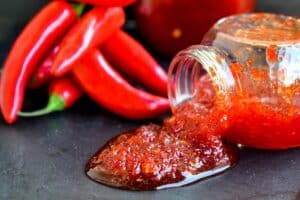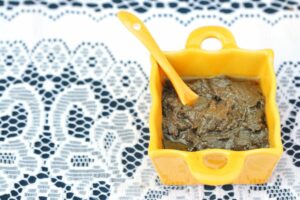Soy sauce is one of the most popular condiments in the world, but if you can’t use it directly, substitutes may be your only viable option. Let’s look at what soy sauce is and what to look for in a soy sauce substitute.
What is Soy Sauce?
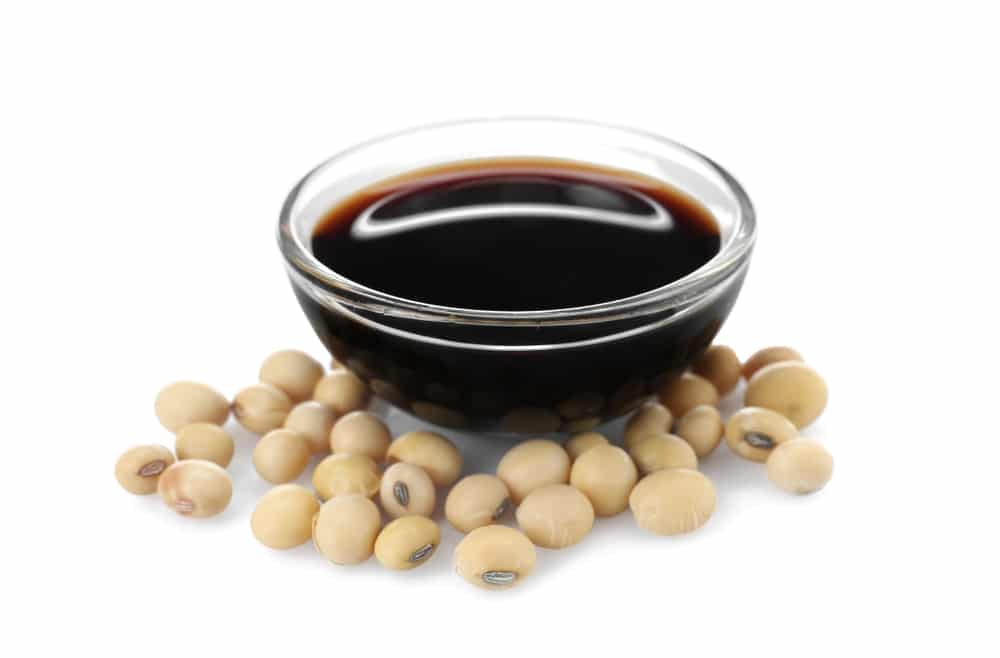
Soy sauce, made with traditional methods, is a paste made from soybeans, roasted grain, brine, and an aspergillus mold fermented and distilled into a liquid form. Several variations on the basic process exist, including high-salt and low-salt options that can provide somewhat different tastes.
Top 5 Soy Sauce Substitutes
Here are the best options if you’re looking for a substitute for soy sauce:
1. Tamari (Best Overall)
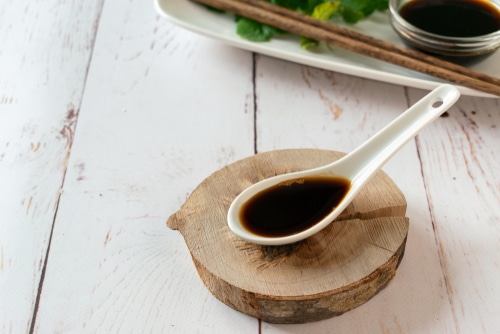
Tamari stands out more than anything else on this list because it’s almost soy sauce, but it uses slightly different ingredients. Tamari is a byproduct of making miso (a fermented soybean paste with many variations that’s especially popular in Japan), and it’s a great way to reuse the leftovers because tamari is delicious in its own right.
The main thing that separates tamari from soy sauce is that properly-made tamari uses rice instead of wheat. This means it’s naturally gluten-free but otherwise tastes like a milder, less-salty version of soy sauce. Tamari is also a little bit thicker than soy sauce.
You can use tamari essentially anytime that you could use soy sauce in any recipe, and without changing the amount you add. This means that it’s far and away the best substitute for most people.
However, tamari does have one general weakness as a sub for soy sauce: it uses soybeans. If you’re allergic to those or can’t have soy for any other reason, tamari is not a good choice.
Incidentally, some people consider tamari the original sauce. The recipe for making it is closest to what Japan imported from China and probably older than the recipe for soy sauce. It’s not nearly as popular even in its home country, though, because only about 1.5% of all soy-type sauces produced in Japan qualify as tamari.
Furthermore, some people use wheat and call the product tamari, even though this isn’t technically correct. Make sure to read the labels on tamari if you’re trying to avoid wheat and gluten, just to make sure you’re buying what you think you are.
There are a few soy sauce-like options on the market outside of tamari, although most are so close to soy sauce that they’re not actually substitutes. Of these, twice-brewed soy sauce (also known as saishikomi) is made similar to regular soy sauce but uses existing soy sauce instead of a regular brine. The result is an extremely dark, powerfully-flavored sauce.
For those who prefer a milder taste, white (“Shiro”) sauce is mostly wheat instead of soybean, which gives it a pale and sweet taste. This is especially hard to find, though, since it’s used mainly in high-class cooking. You might have better luck brewing it yourself if you have the time for that.
2. Worcestershire Sauce (Best Non-Soy Sub for Soy Sauce)
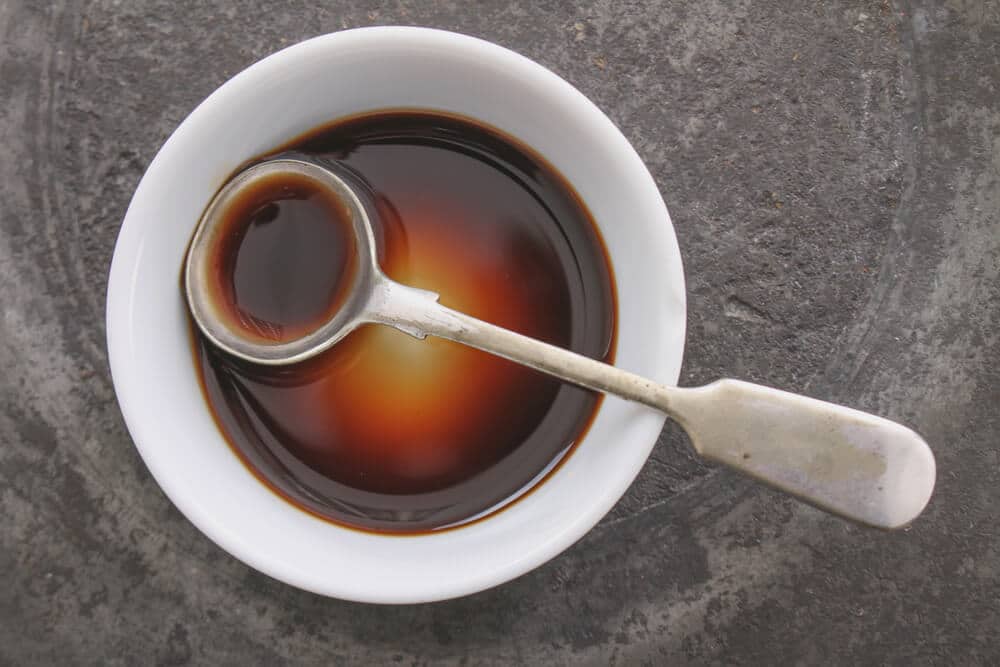
Famous for the difficulty of pronouncing its name, Worcestershire sauce is a rich and flavorful alternative to soy sauce. Mainly known for its association with the British people, this sauce combines malt vinegar with spices, sugar, salt, anchovies, onions, molasses, garlic, and tamarind extract.
While it has sodium in it, this sauce is distinctly less salty than traditional soy sauce. That makes it a good substitute if you want to get a good flavor while reducing your sodium intake.
However, there are two things to keep in mind for this product. First, Worcestershire sauce usually has a bit of seafood in it for flavor, and that can trigger allergies. Second, this sauce is significantly more expensive than soy sauce, so it’s a pricey choice if you need to use a lot of sauce all at once.
This is the best non-soy option overall, but we recommend it for cases where you only need a little sauce at a time. Consider using something else if you need to use a lot of soy sauce alternative.
If you have a bit of time, you can probably make something close to Worcestershire sauce from ingredients at home. Recipes vary, but the better ones usually involve mixing molasses, tamarind paste, anchovies, vinegar, and usually other ingredients and boiling them on the stove.
“Instant” sauce recipes usually aren’t as good as anything you’ll need to age, though, so try to plan if you want to use a homemade substitute. Most recipes for homemade sauce produce about a jar at a time.
Related Article: Best Substitutes For Worcestershire Sauce
3. Coconut Aminos (Best Lower-Sodium Option)
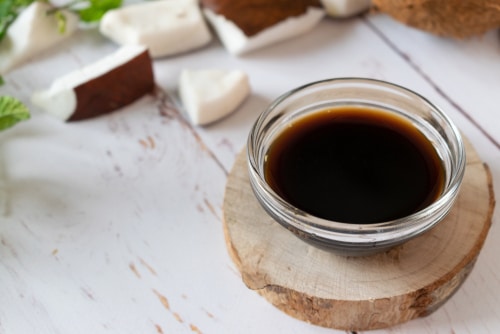
Coconut isn’t the first thing most people think of as a soy sauce replacement, but this incredibly versatile fruit has countless options. In this case, coconut aminos use the sap of the coconut tree, not the famous fruit.
Fermenting coconut sap with sea salt makes for a savory, salty, and somewhat sweet sauce. It doesn’t have the flavor of the coconut fruit, either, so don’t let the source deter you if you dislike regular coconut flavors.
Coconut aminos are naturally free of soy, wheat, and gluten and have about 90mg of sodium per teaspoon compared to 280mg in a similar amount of soy sauce. This makes it a healthy alternative that avoids most common allergens. It’s not a truly low-sodium option, but it’s certainly lower than most other options on this list.
However, like all substitutes, there are a few drawbacks to keep in mind.
First, coconut aminos are relatively rare in some areas, especially compared to soy sauce. Any region that sells any significant amount of Asian foods probably has a lot of soy sauce shipping in, but coconut aminos aren’t nearly as common. Internet shipping is always an option, but high shipping costs can become a factor.
Second, coconut aminos are relatively expensive. It’s not as costly as quality Worcestershire sauce, but you can still expect to pay about 50% more than soy sauce for a bottle of this stuff. That can make it a little less appealing to use in larger quantities.
Finally, some people think that coconut aminos are too sweet and mild to serve as a good substitute for soy sauce. This isn’t as big of a concern if you’re dipping foods, but if you want to use a soy sauce substitute in cooking, these may not be a good choice.
4. Maggi (Best Wheat Substitute)
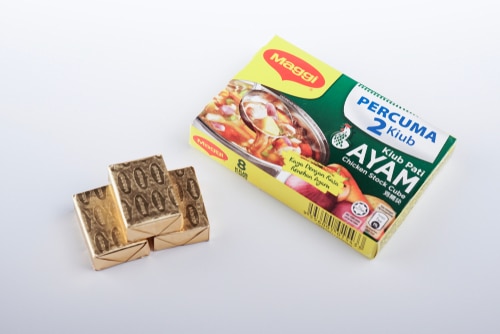
Little-known outside of Europe, Maggi is a flavor enhancer available in a cube, powder, and liquid forms. It tastes surprisingly close to soy sauce, and like its more well-known cousin, it goes well with an impressively wide variety of dishes.
The primary ingredient in Maggi is hydrolyzed wheat protein, which makes this a poor choice for anyone with wheat or gluten sensitivity. Outside of that, however, Maggi offers a generally deeper and richer flavor than soy in soups and meat dishes. It’s also affordable, which makes it a great choice if you’re on a budget.
Unlike some other soy substitutes, Maggi is relatively concentrated. This means it’s usually better to start with a small amount and only add more as needed. You can substitute it for regular soy sauce (or tamari) in equal amounts, but you may want to use a little less maggi than either of those.
Maggi also has several varieties that are common throughout the world. Notable variations include a garlic variant in the Philippines, a sour version in Poland, and a lime version in Mexico. These offer some versatility in the kitchen that traditional soy sauce may find hard to match.
5. Dried Mushrooms (Best DIY Sauce)
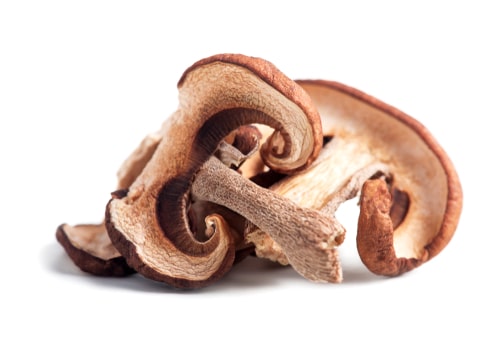
Finally, dried mushrooms can be a practical alternative to any of the sauces above, assuming you like the flavor at all. Notably, this option is free of both gluten and soy, and it’s extremely low in sodium as well. If you’re watching your intake of ingredients, this is definitely a standout option.
While you can try several different types of mushrooms here, the best option is dried shiitake. These are available in many grocery stores, especially those that sell Asian foods, so chances are you won’t have much trouble finding them.
To make this sauce, rehydrate the mushrooms in purified water, then substitute the mushroom-soaked water for soy sauce in equal amounts. It won’t taste too close to soy sauce, but it should provide some umami flavor. As a bonus, you can probably add those rehydrated mushrooms to whatever dish you’re making, and they should blend right in.
Final Thoughts
Finding the right soy sauce substitute is a little more complicated than it looks at first. Picking a substitute requires evaluating the overall flavor, ingredients, and cost of each option. Food allergies and ingredient accessibility means there’s no perfect option that fits everyone, everywhere.
However, if you can accept soy, tamari is easily the best option for most people. Failing that, coconut aminos are a great way to avoid both soy and wheat, though you’ll need to look to the mushrooms for a truly low-sodium choice.



